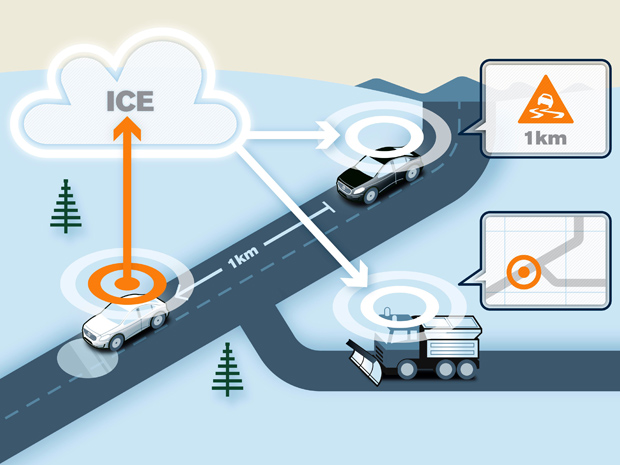During rough winters, drivers have to deal with icy patches themselves. Situation becomes critical during nights when they have to fight the patches while driving in a different zone. However, things might become different when cars start sharing the on-road conditions amongst themselves.
A world of grander vision
Swedish carmaker Volvo in collaboration with Swedish Transport Administration and the Norwegian Public Roads Administration is looking forward to create such a world where cars would be ‘talking to each other’ and explaining the slippery road condition.
In order to test the idea, the company is planning to build a fleet of 1000 smart cars that would rely on a cloud-based network for sharing info regarding driving conditions. If one car experiences an icy patch, it would broadcast slippery-road warning to others cars in the swarm. Upon receiving signal, the subsequent vehicle would put on its hazard lights. Simultaneously, it would also convey its location signal to the nearby cars.
With these features, Volvo aims to create a world of grander vision for its cars, a world that would be free from any serious injuries. They expect it to get fully functional by 2020.
In order to test the system in winter conditions, the carmaker is planning to deploy its test fleet to Gothenburg in Sweden and Oslo in Norway.
Cloud-based warning system
As per the sources, the cloud-based warning system would also assist public officials in highlighting the winter road that might require maintenance.
Volvo is also looking forward to try other ideas for road safety on cloud-based warning system. For instant, a different warning system targets car drivers as well as bicycle riders in situation of consequent accident or clash so that both can take prior action accordingly.
Volvo is not only taking the human drivers into consideration, but it also wants to test robot driver and autonomous vehicle technologies since the machines reflexes are much quicker than the humans hence, can react much quicker to potentially dangerous situations.
Source: Volvo Cars




